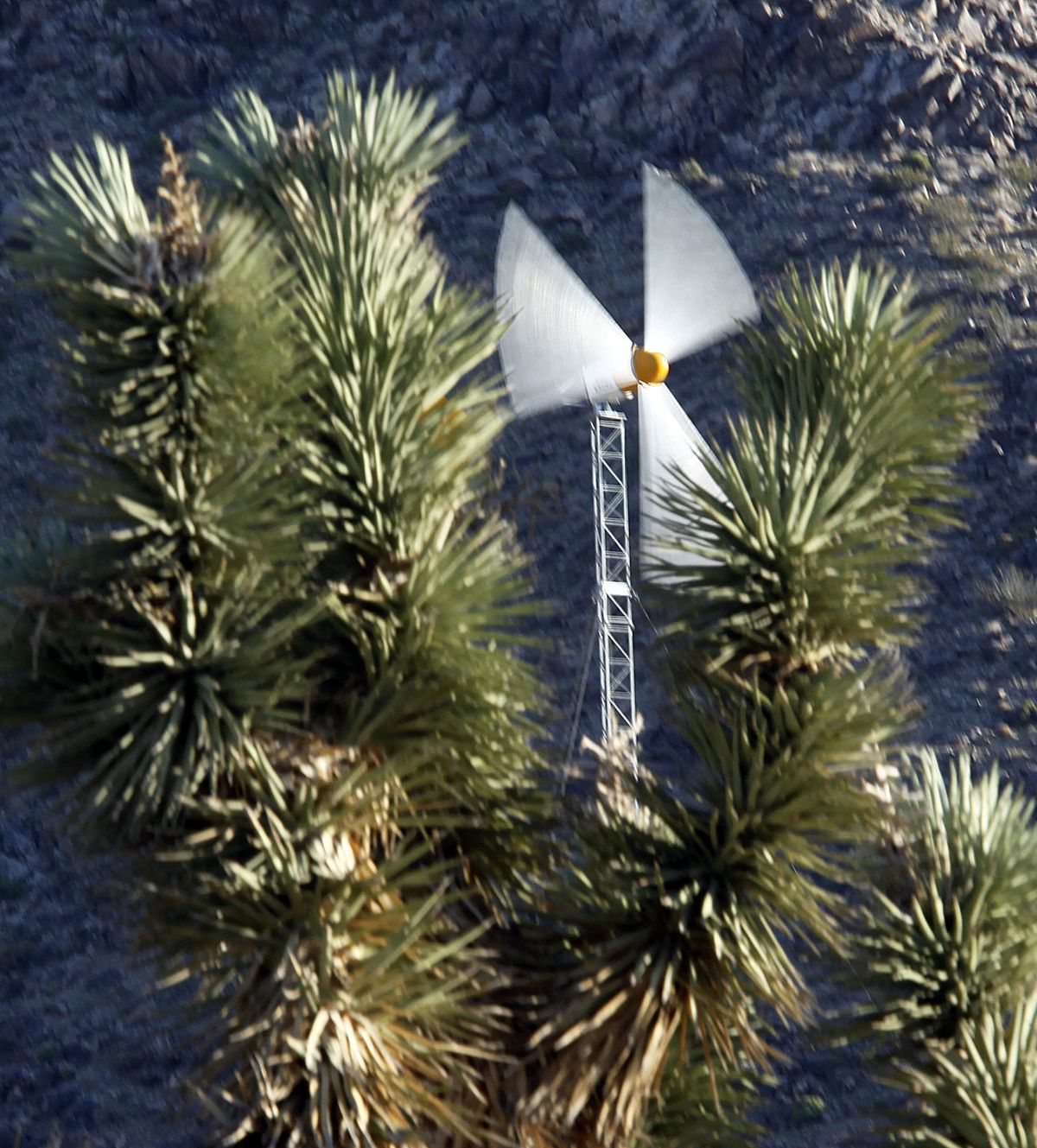BLM’s eagle worries stymie wind projects
Billions of dollars in investments are being held up, companies say

APPLE VALLEY, Calif. – Fears that whirling wind turbines could slaughter protected golden eagles have halted progress on a key piece of the federal government’s push to increase renewable energy on public lands, stalling plans for billions of dollars in wind farm developments.
The U.S. Bureau of Land Management suspended issuing wind permits on public land indefinitely this summer after wildlife officials invoked a decades-old law for protecting eagles, according to interviews and documents obtained by the Associated Press.
The restriction has stymied efforts to “fast-track” approvals for four of the seven most promising wind energy proposals in the nation, including all three in California.
Now, these and other projects appear unlikely to make the year-end deadline to potentially qualify for hundreds of millions of dollars in stimulus funds. If extensions aren’t granted in the lame duck session of Congress, the future of many of these plans could be in doubt.
“(Companies) are waiting to know the criteria to get a permit,” said Larry LaPre, a wildlife biologist for BLM’s California desert district, of the companies hoping federal agencies will begin permitting again soon. LaPre said he expects it to be “at least a year or longer” before permitting resumes.
Golden eagles are the latest roadblock to establishing wind farms on federally owned land, already an expensive process plagued by years of bureaucratic delay. The projects also have been untracked by other wildlife issues, a sluggish economy and objections by defense and aviation authorities that wind turbines interfere with the country’s aged radar system.
The delays are occurring despite a target set by Congress in 2005 that directed the Interior Department to approve about 5 million homes worth of renewable energy on public lands by 2015. Since then, only two of the more than 250 currently proposed wind projects have been approved and neither has been built, records and interviews show.
The four fast-track projects in jeopardy of losing stimulus funds due to eagle issues would alone generate about 416 megawatts of clean energy, enough to power roughly a half million U.S. homes during peak usage.
There are presently 28 wind farms operating on public lands, which make up about 13 percent of the U.S. land surface, although records show that more than 800 have been proposed in recent decades.
The vast majority of public lands regulated by the BLM are in western states, where all current onshore wind farms approved or in planning stages will be located. Offshore wind farms, like those proposed off the New England coast, are regulated by a different federal agency.
“It’s a broad challenge to us as a country,” said Nathanael Greene, renewable energy policy director at the National Resources Defense Council. “How do we rapidly deploy the renewable energy technologies and transmission infrastructures to stave off catastrophic climate change and local and regional air pollution that comes with burning fossil fuels? Even the best sited projects have impacts on the landscape.”
The July eagle memo obtained by the AP directed BLM staff not to approve any more permits until companies submit protection plans. Federal officials said they do not know when permitting will resume nor whether the stimulus deadline will be met.
Meanwhile, a group of Democratic lawmakers late Friday urged colleagues in both the House and Senate to support the inclusion of a one-year extension of the stimulus deadline in any tax-package agreement that makes it through this lame-duck session. Still, it was uncertain whether the extension for renewable energy project cash grants would make it into any final bill.
Wind companies estimate the eagle rules are holding up $68 billion in investment, and they complain that they are stalled because the U.S. Fish and Wildlife Service has yet to finalize permit requirements.
“Most BLM projects are being held up as a result of this,” said John Anderson, director of siting policy at the American Wind Energy Association. “It’s definitely a mixed message and an example of one hand not knowing what the other hand is doing.”
Assistant Secretary for Fish and Wildlife Tom Strickland said the department is working on the issue but “has no intention of shortcutting a thorough environmental review process.”
“The fast-track process has meant cutting red tape – not cutting corners,” Strickland wrote in an e-mail to the AP.